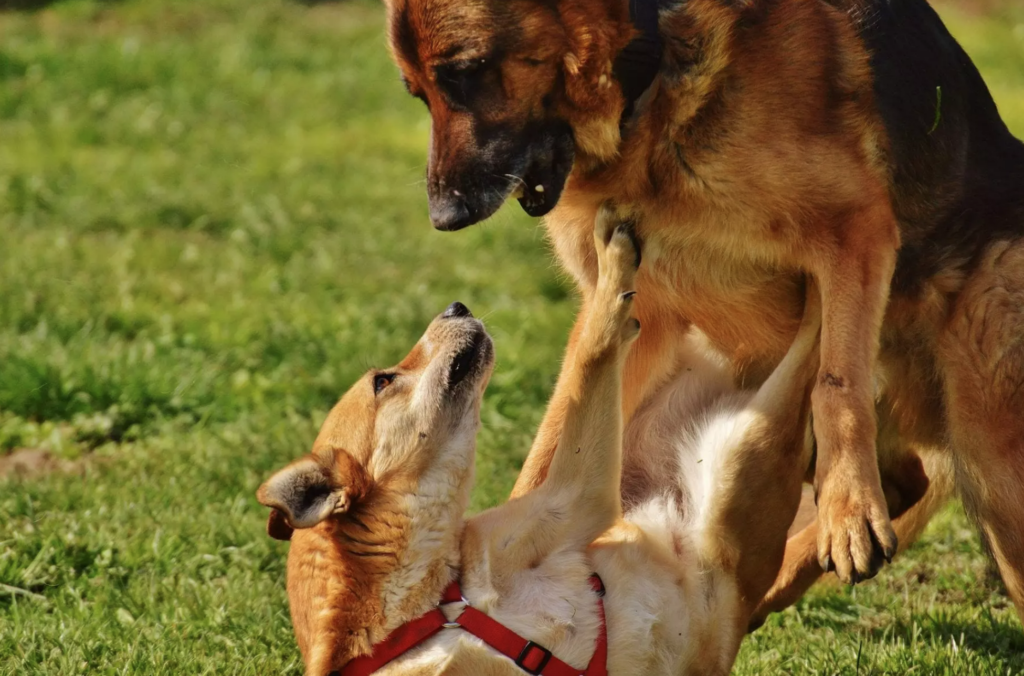
Dr Deneille Logan is one of our very experienced senior emergency veterinarians. In the below article she shares her knowledge on what is often (unexpectedly) involved in treating a patient after being attacked by another dog.
How does your (emergency) veterinarian approach the treatment of each patient? What do they need to be wary of? What do pet owners need to be aware of when a veterinarian begins assessing your pet?
Dog Fight Wounds
I have treated many patients with dog fight injuries during my time as an emergency veterinarian. One of my big challenges is helping families understand that it is often impossible to predict the extent of injury from what I find on initial physical examination. Unfortunately, what you see is often not what you get.
For example if we were to take it at face value, a small puncture can look like it just needs a stitch or two to close the hole, and the patient is fixed, problem solved.
However, depending on the location of the bite marks, we emergency vets can see a plethora of serious injuries just waiting to be discovered. Testing in the form of radiography, ultrasound, fluid sampling and testing, blood testing , and even surgical exploration is needed to determine how severely traumatised our patient is. Even then, we cannot know how recovery will play out. Secondary infections, abscesses, tissue death as a result of avulsion and crush injury, and metabolic and clotting problems due to sepsis or inflammatory response can rear their ugly heads days later.
So why is the damage so often worse than it looks?
- Dog skin is highly mobile. Take a pinch of skin over your dog’s back and see how far you can move that section of skin around over the underlying musculature. When we see a puncture in the skin, it is a mistake to assume that the injury is limited to that area directly under the puncture. You see, as the biter moves their jaw, for example in a shaking motion, the skin is not torn, but is dragged around by the puncture site. Meanwhile, structures underneath are not so mobile, so they are slashed, macerated and crushed while most of the overlying skin is left masking these injuries. Many tracheas have been torn, bones fractured, chests punctured, intestines cut and torn and kidneys avulsed, under normal looking skin.
- Dogs have amazing jaw strength. Whilst this seems intuitively obvious, I think we easily underestimate the amount of damage a dog can do as the bite and crush tissue. A way to help digest this is to think of the dog tooth as if it is a ballpoint pen- in shape and sharpness. Now imagine the force you would need to jab a pen through a leather shoe. This give some idea of the amount of force needed to break through dog’s skin. Then, take that same force and apply it over an uncooked steak or sausage. This will show you the sort of damage that can occur to the organs and muscle underlying the skin.
- Bruising is not immediately apparent. Think of how long it can take for bruises to show on your body after a knock or bump. It is the same for dogs. Areas without punctures but that have been crushed can take some time to reveal themselves.
- The probability of delayed complications from infection and inflammation are difficult to predict immediately after the attack. Patients with a lot of tissue injury or opened intestinal tract or severe shock are at a greater risk of these secondary complications.
Should you ever need to take your dog to the vet after a dog bite injury, just be mindful that it is often impossible to know how severely your dog is injured during the first veterinary physical exam. This, in turn, makes it impossible to know how long it will take for your dog to recover or how much treatment will ultimately cost. Be prepared that it may be more like a journey with your pet and vet.





